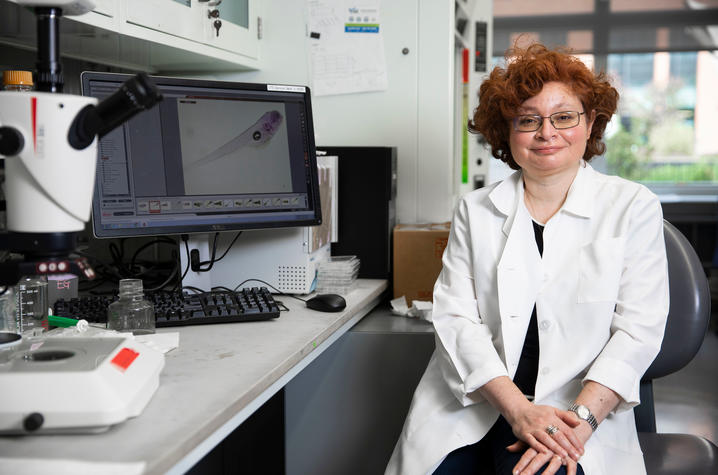UK Research Could Pave Way for Noonan-like Syndrome Treatment

A University of Kentucky College of Medicine researcher has been awarded $1.9 million to continue research examining molecular pathogenesis of Noonan-like syndrome.
Emilia Galperin, Ph.D., professor in the Department of Molecular & Cellular Biochemistry, was awarded a prestigious R35 Maximizing Investigator’s Research Award Grant from the National Institute of General Medical Sciences that will fund her lab’s research over the next five years.
Normal human cell growth is controlled by complex signaling pathways, and errors in these signal transmissions can have serious consequences including tumor formation or developmental diseases.
Galperin’s lab is focused on signaling pathways in the cell called extracellular signal-regulated kinases 1 and 2 (ERK1/2), which are essential for several critical steps of human development. ERK1/2 contains a protein called Shoc2, which allows efficient signal transmission.
Shoc2 mutations cause Noonan-like syndrome, a genetic disorder that causes unusual facial characteristics, short stature, heart defects present at birth, bleeding problems, developmental delays, and malformations of the bones of the rib cage.
Galperin’s study aims to understand how Shoc2 is involved in determining genetic diseases, which is not currently well-understood. It will also lay the groundwork for future studies on developmental disorders and contribute to the advancement of drug development for diseases of the same group as Noonan-like syndrome, which affects about 1 in about 1,000-2,500 people.
Noonan syndrome was named after Dr. Jacqueline Noonan, a pediatric cardiologist who served as a faculty member in UK’s College of Medicine for more than 40 years. Noonan, one of the most important individuals in the history of American pediatric care, is internationally known for her description and characterization in 1962 of the genetic disorder.
Galperin’s lab has developed a model for Shoc2 deficiency in zebrafish and established that loss of Shoc2 can cause the same early development congenital malformations observed in patients with Shoc2 mutations.
“The Shoc2 protein seems to be vastly understudied and we have already contributed quite a bit of basic understanding,” said Galperin. “This is necessary not only to better understand what exactly is happening in the progression of the disease, but to get a basic understanding of how it works before pursuing potential drug development.”
More from this series Research Support
Credits
Elizabeth Chapin (Research Communications)



